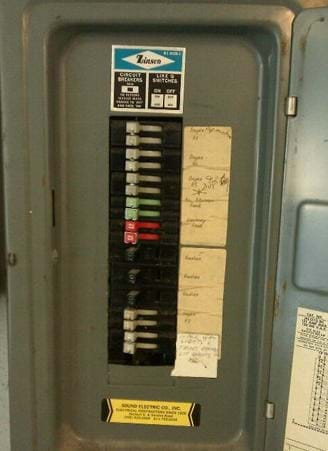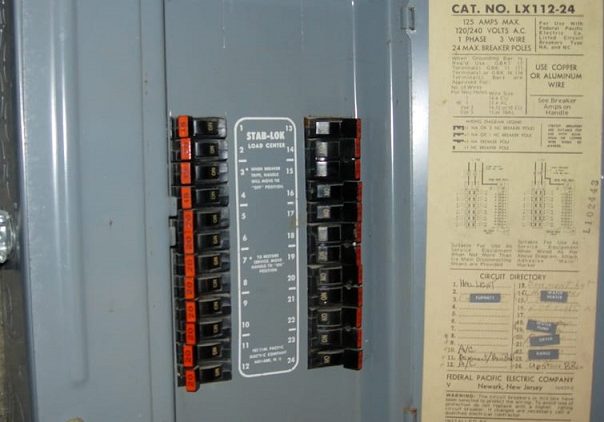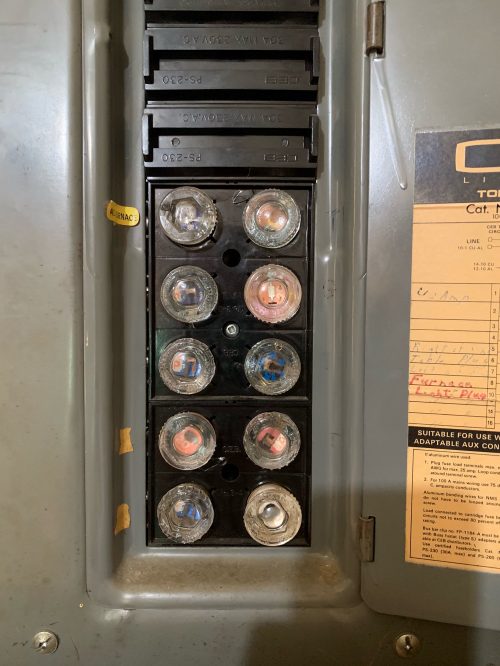Three outdated and unsafe electrical panels
Stay informed
If you live in a home that was built before 1990, there is a chance that you may have one of these outdated and unsafe electrical panels. It’s important to know what are the potential dangers from these panels to ensure that you and your family are safe, as well as being able to spot any red flags in future home purchases.
Zinsco or GTE-Sylvania

- Zinsco or GTE-Sylvania panels were commonly installed in homes in certain regions throughout the country. However, it has been proven time and time again to have a major design flaw, which can lead to overheating, melting breakers, electrical shock and fires. In fact, one expert states that at least 1 out of 4 Zinsco circuit breakers will fail to trip if there is an overcurrent or short circuit.
- What’s wrong: Zinsco panels do not meet today’s electrical codes due to it’s design flaws. Certain components inside the panel contain aluminum, which expand and contract due to heat. Circuit breakers do not have a solid connection to the bus bar, allowing it to become loose or slide. Some breakers will appear loose, and yet still be connected to the bar.
- How to detect a Zinsco panel: Check for any mutli-colored plastic breaker switches, Also, look for a Zinsco or Slyvania logo or brand name, either above the breakers, or on the panel cover door.
FPE (Federal Pacific Electric Company)

- FPE or Federal Pacific Electric Company produced some of the most widely used electrical panels throughout the US between 1950-1980, and can even be found in buildings built up until 2000. Since then, multiple lawsuits due to evidence of it’s faulty design has forced FPE to stop manufacturing these panels, and becoming widely known as one of the main panels to avoid and/or replace.
- What’s wrong: Again, this comes down to a faulty design with it’s circuit breakers, FPE breakers do not meet current electrical codes and standards. The weak components in the breakers can easily deteriorate, keeping the breakers from tripping if there is an overcurrent. The breaker switches hang out over the dead front cover, making it difficult to remove the panel, often causing a breaker to become tripped, or unintentionally disconnected. Plus, the fraud and coverup by FPE claiming that it’s materials and designs were up to code speaks for itself as to how dangerous these panels can be.
- How to detect a FPE panel: look for a FPE or Federal Pacific Electric Company name printed on the dead front cover. Also check for any metal engravings on the inside or outside the cover.
Fuse box

- Fuse boxes are a testament to an old way of life, the design of the past, when things were simpler. In all honesty, fuses are not inherently unsafe. In fact they work very much like a circuit breaker, in the sense that they allow a certain amount of power through them, and will trip if it passes that limit. However, tripping in this case would mean the fuse metal strip vaporized, and must be replaced.
- What’s wrong: Other then the fact that you may end up replacing numerous fuses, instead of having the benefit of resetting the switch… fuse boxes also can indicate a smaller amount of power, which usually translates to not being enough for modern uses.
- How to detect a fuse box: If you have a fuse box, it’s pretty obvious. But if you have any doubts, have an electrician check it out.
Stay Safe
This article will only go over the brand names and style of electrical panels. However, any electrical work or in-depth investigation should be preformed by a professional electrician. If you are not qualified, do not attempt to unscrew the panel cover yourself. It’s always better to be safe than sorry.
